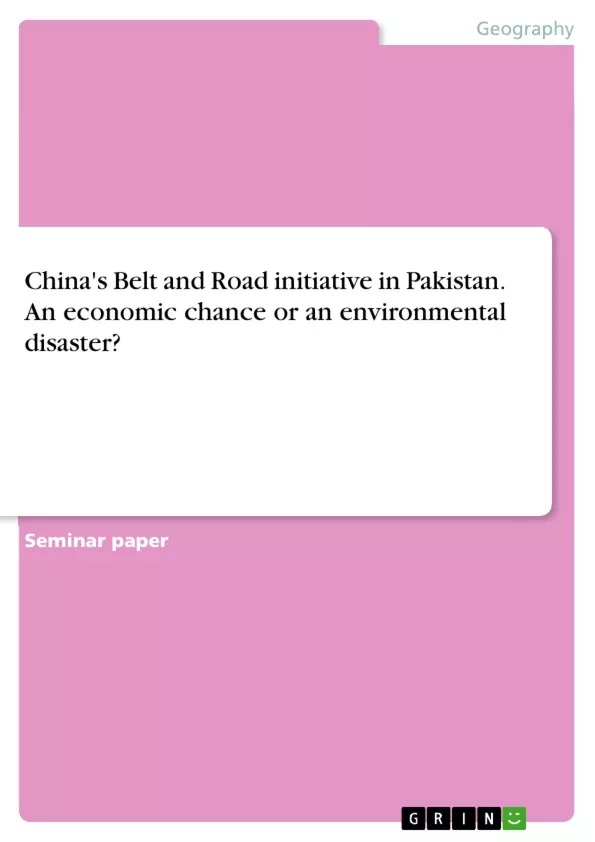China’s Belt and Road initiative is a major economic and geopolitical project aiming at connecting China with Europe, Central Asia and Russia via several proposed trade routes. The maritime silk route and the land silk road are two main parts of it which include both several branches. One branch leads from western China via the Khunjerab pass, the Karakoram and Himalayan ranges as well as the Indus plane and the desert of Balochistan to the port of Gwadar in Pakistan. This branch has a specific economic significance because it connects the land silk road with the maritime silk road. The government of Pakistan hopes to develop the country’s economy by the Belt and Road initiative and the government of China wants to connect Pakistan to its strategic sphere and isolate India’s economical chances and connections in South Asia. On the other side, it crosses the world’s highest paved international border check point, leads through the politically disputed region of Gilgit-Pakistan which is under Pakistani control, but claimed also by India, as well as the Indus plane with several environmentally related issues like the world’s second worst air polluted city Lahore and ends in Gwadar, the main harbour city in the province of Balochistan which is regularly shaken by separatist movements.
- Citar trabajo
- Anonym (Autor), 2023, China's Belt and Road initiative in Pakistan. An economic chance or an environmental disaster?, Múnich, GRIN Verlag, https://www.grin.com/document/1591924



